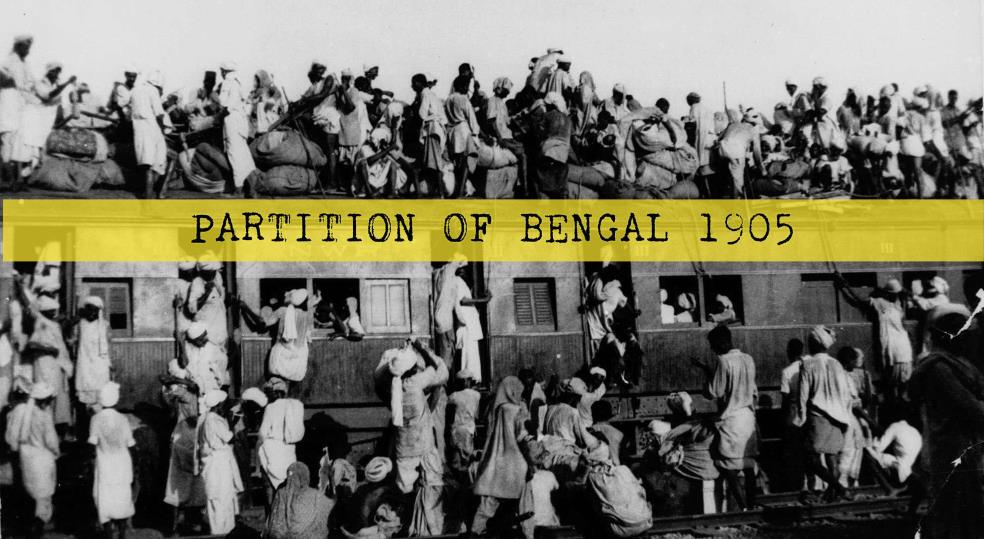As West Bengal marks World Population Day today, the annual observation casts a sharp spotlight on the state’s complex demographic realities. Far from a mere statistical exercise, this day in West Bengal invariably leads to profound discussions about population shifts, heavily influenced by a tumultuous history of migration from neighboring Bangladesh, and more recently, the humanitarian crisis of the Rohingya. These demographic currents have ignited heated debates, touching upon the very essence of identity, resource allocation, and national security.
A persistent theme in the state’s public discourse is the notion of an “unaccounted for” population, frequently linked to alleged illegal immigration. This perception, often amplified in political rhetoric, fuels anxieties about the strain on public services, the potential erosion of the state’s unique cultural fabric, and the specter of increased social instability.
A History Forged in Migration: From Persecution to Political Allegations
West Bengal’s population narrative is deeply rooted in the historical upheavals of the 20th century. The 1947 Partition of Bengal initiated a significant influx of Hindu refugees from East Pakistan (later Bangladesh) into West Bengal, as they fled religious persecution.
This wave intensified dramatically in the period leading up to the 1971 Bangladesh Liberation War, when millions, predominantly Hindus, sought refuge in India. The sheer scale of this humanitarian crisis eventually compelled India to intervene militarily, a key objective being to halt the overwhelming flow of persecuted individuals.
Yet, the movement across the permeable Indo-Bangladesh border did not entirely cease post-1971. For decades, successive West Bengal governments—from the Left Front to the current Trinamool Congress (TMC)—have faced consistent accusations of tacitly encouraging or overlooking illegal immigration from Bangladesh.
Critics often allege that this strategy serves to bolster their “vote banks”, effectively exchanging a blind eye to undocumented status for electoral support. Both the Left and TMC dispensations have vehemently denied these charges, consistently affirming their commitment to national laws and border security.
Mounting Concerns: Food Security and National Security Imperatives
In recent years, anxieties surrounding undocumented Bangladeshi citizens crossing into India have expanded to include serious threats to food security and national security. The argument is multi-faceted: a rapidly expanding, unrecorded population places considerable pressure on existing food supply chains and land resources, particularly in a densely populated state like West Bengal.
Furthermore, the presence of undocumented individuals raises legitimate concerns about their integration, potential exploitation, and the possibility of hostile elements exploiting these porous borders for illicit activities, thereby compromising national security.
The Rohingya Influx: A Layer of Humanitarian and Security Complexity
Adding another intricate dimension to West Bengal’s demographic challenges is the more recent influx of Rohingya refugees from Myanmar, predominantly transiting through Bangladesh. While a large proportion of Rohingya refugees are housed in camps in Bangladesh, a notable number have sought refuge in India, including West Bengal.
UNHCR Figures (Illustrative Context)
The UNHCR (United Nations High Commissioner for Refugees) has registered over 20,000 Rohingya refugees in India. However, the Indian government’s estimates in 2017 suggested a higher figure, around 40,000. These numbers encompass Rohingya from earlier waves of persecution and those more recently arriving from Bangladesh due to deteriorating conditions in the camps there.
Challenges Faced by Rohingya: According to UN and other humanitarian reports, Rohingya in India confront significant obstacles:
Precarious Legal Status: India is not a signatory to the 1951 Refugee Convention. It officially classifies Rohingya as “illegal immigrants,” denying them formal refugee status. This results in restrictions on movement, limited access to public services like healthcare and education, and a lack of formal employment opportunities.
Overcrowding and Substandard Infrastructure: Many Rohingya reside in congested, informal settlements with inadequate access to clean water, sanitation, and proper housing, exacerbating health and well-being issues.
Vulnerability to Exploitation: Due to their undocumented status and lack of legal protection, Rohingya are highly susceptible to exploitation, including human trafficking and engagement in precarious, low-paying informal jobs.
Security Concerns: Indian intelligence agencies have, at times, voiced concerns regarding the potential for radicalization among some Rohingya and alleged links to extremist organizations, adding a sensitive layer to the national security debate.
The presence of Rohingya in West Bengal, though numerically smaller than that of Bangladeshi migrants, significantly complicates the management of undocumented populations, raising complex questions about humanitarian obligations versus national security imperatives. While some local NGOs and individuals in West Bengal have extended humanitarian aid, the official stance of the Indian government consistently labels them as illegal immigrants.
Population Dynamics and Societal Ramifications
The perceived “population explosion” in West Bengal over the last decade, often attributed to both natural growth and continued immigration, is frequently posited as a direct contributor to a range of societal challenges:
Unemployment
A rapidly expanding population, particularly among the youth, places immense strain on the state’s job market. While West Bengal’s Total Fertility Rate (TFR) has reportedly fallen below the replacement level (according to some government surveys, though this is a subject of ongoing discussion), the demographic momentum from past growth and continued migration still impacts the workforce. This leads to intense competition for limited opportunities, particularly in rural areas and among less-skilled workers.
Crime and Political Violence
The strain on resources and heightened competition, exacerbated by a perceived unchecked population increase, contributes to social friction. This manifests as escalating crime rates and, historically, intensified political violence across the state, as various groups contend for resources and influence.
Religious Polarization
The perceived shifts in religious demographics constitute a particularly potent and often inflammatory aspect of the population debate. While the 2011 Census of India recorded the Muslim population in West Bengal at approximately 27.01%, unverified claims in political discourse suggest a current percentage around 35%. This narrative, irrespective of its immediate statistical accuracy, is effectively used to fuel religious polarization, fostering fears of a perceived “displacement of people” and the erosion of the established identity of the state’s existing communities.
The Existential Question: Identity and Displacement
At the very core of West Bengal’s population discourse lies a profound and pervasive apprehension: the threat to identity and the potential displacement of established communities. The prevailing narrative suggests that if the influx of an unmeasured population—encompassing both undocumented Bangladeshis and Rohingya—continues unchecked, it could fundamentally alter the demographic, cultural, and linguistic composition of the state. This, in turn, is presented as leading to a permanent loss of identity for the indigenous Bengali population, powerfully echoing historical memories of partition and mass displacement.
World Population Day 2025 in West Bengal serves as a poignant reminder of a state navigating its complex historical burdens, the ongoing realities of cross-border movements, and the profound societal impacts of demographic shifts, including the added dimension of the Rohingya crisis. Addressing these interwoven challenges with a nuanced, data-driven, and humanitarian approach will be crucial for West Bengal to forge a path towards inclusive growth, social harmony, and the preservation of its unique identity for all its inhabitants.


